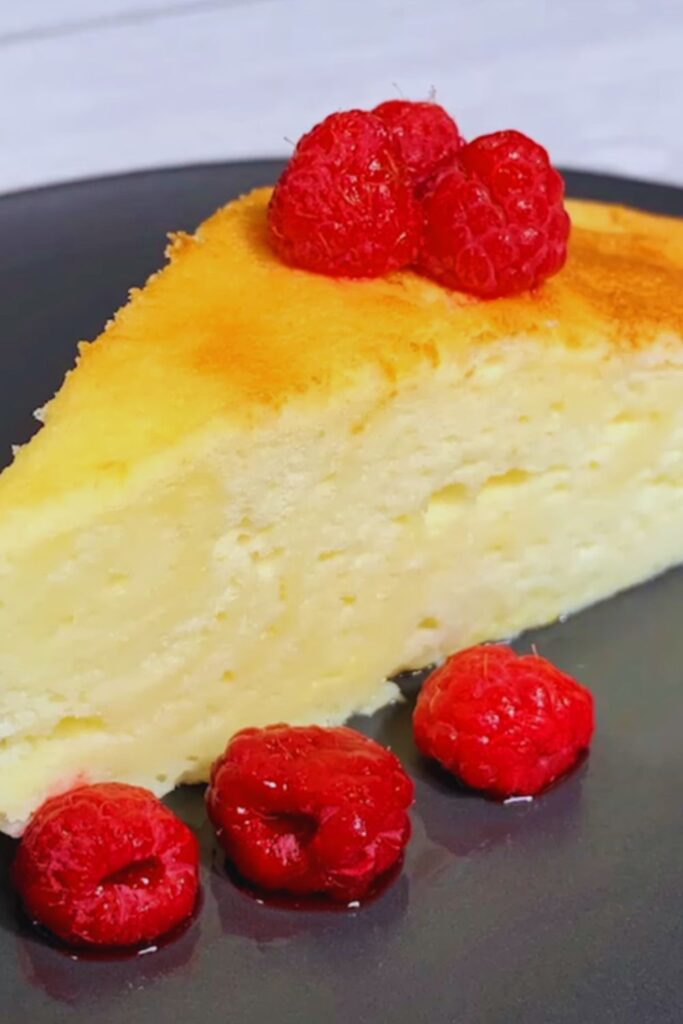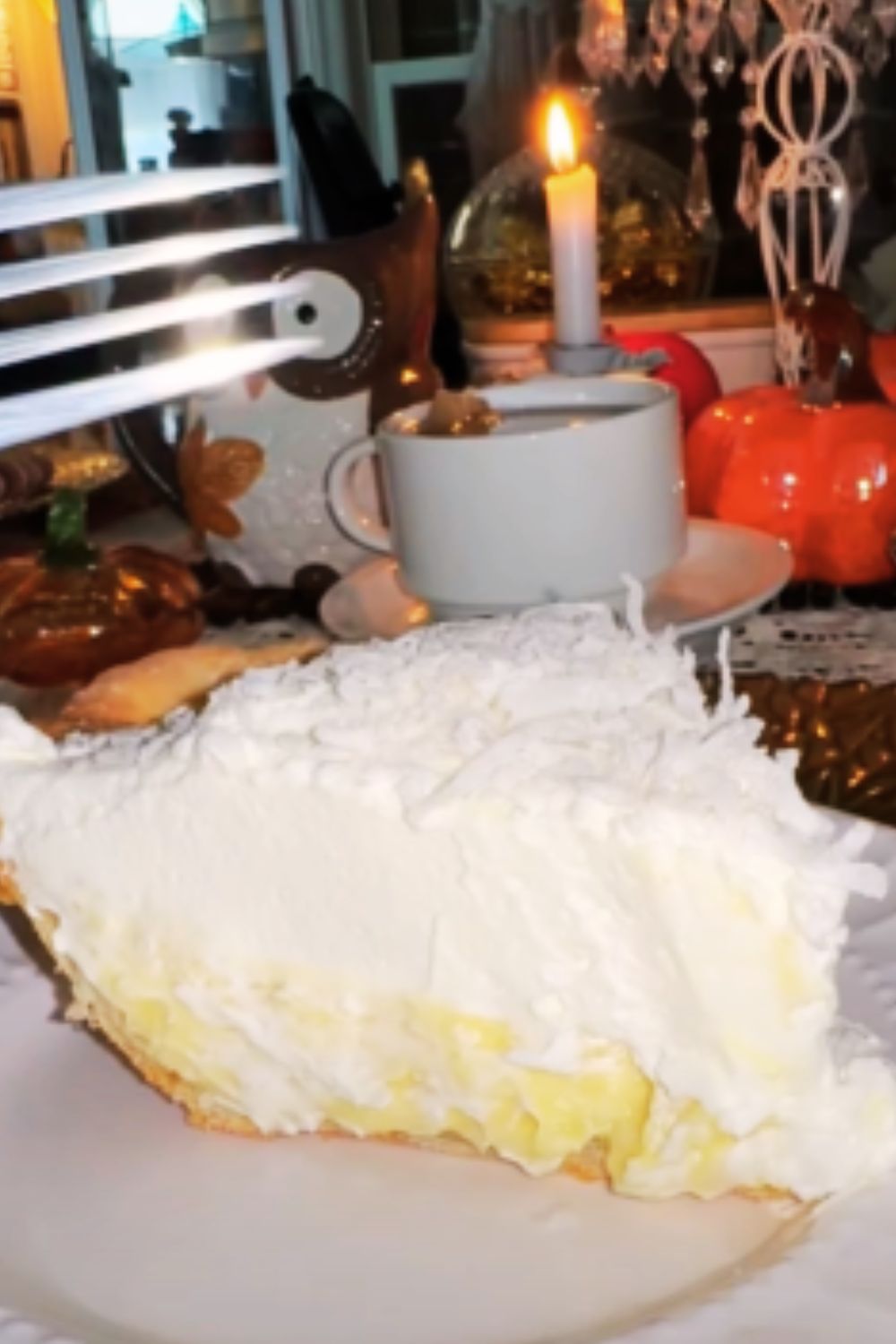There’s something magical about a cake that’s both incredibly simple to make and impossibly delicious. Yogurt cake, or “gâteau au yaourt” as the French call it, is precisely that kind of miracle. This humble dessert has been a staple in French households for generations, often one of the first recipes children learn to bake. Why? Because it’s practically foolproof and uses a yogurt cup as its measuring tool!
I’ve been baking this cake for years, tweaking and perfecting it along the way. Today, I’m sharing my ultimate version that never fails to impress friends and family. The beauty of yogurt cake lies in its moist, tender crumb and subtle tang from the yogurt that balances the sweetness perfectly.
The Magic of Yogurt in Baking
Before diving into the recipe, let’s talk about why yogurt makes such a fantastic ingredient in cakes. Beyond its delightful flavor, yogurt serves several crucial functions:
Moisture Provider : The acidity and fat content in yogurt creates a cake that stays moist for days. You’ll never have to worry about a dry slice, even three days after baking.
Leavening Helper : Yogurt’s acidity activates baking soda and helps your cake rise beautifully without becoming dense.
Tenderizer : The protein structure in yogurt helps break down gluten, resulting in a cake that’s soft and tender rather than tough.
Flavor Enhancer : That subtle tangy note adds complexity to what would otherwise be a simple sweet cake.
I’ve experimented with various types of yogurt over the years, and I’ve found that plain, full-fat Greek yogurt delivers the best results. However, you can use whatever variety you have on hand—that’s the forgiving nature of this recipe!
Essential Ingredients & Equipment
Let’s gather everything we need before starting. The brilliance of this recipe is that traditionally, the yogurt container itself becomes the measuring cup for all other ingredients, making it incredibly easy to remember.
Ingredients:
- 1 container (150-170g) plain yogurt (Greek or regular)
- 2 containers granulated sugar
- 3 containers all-purpose flour
- 3 large eggs, at room temperature
- 1/2 container vegetable oil or melted butter
- 1 tablespoon vanilla extract
- 1 1/2 teaspoons baking powder
- 1/2 teaspoon baking soda
- 1/4 teaspoon salt
- Zest of 1 lemon (optional but recommended)
Equipment:
- 9-inch round cake pan or loaf pan
- Parchment paper
- Mixing bowls (one large, one medium)
- Whisk
- Spatula
- Measuring cups and spoons (if not using the yogurt container method)
- Cooling rack
The simplicity of equipment needed makes this cake accessible to everyone, even those with minimally equipped kitchens. I often make this at my vacation rental where kitchen tools are limited, and it never disappoints!
The Traditional Method: Step-by-Step
I love the traditional method of using the yogurt container as a measuring tool. Here’s how to proceed:
- Preheat your oven to 350°F (175°C) and line your cake pan with parchment paper.
- Empty the yogurt into your mixing bowl.
- Wash and dry the yogurt container—this will be your measuring cup.
- Add 2 containers of sugar to the yogurt and whisk until well combined.
- Add the eggs one at a time, whisking well after each addition.
- Pour in 1/2 container of oil or melted butter and the vanilla extract, then whisk again.
- In a separate bowl, combine 3 containers of flour, baking powder, baking soda, and salt.
- Add the dry ingredients to the wet mixture and fold gently until just combined.
- If using, fold in the lemon zest.
- Pour the batter into your prepared pan and smooth the top.
- Bake for 35-40 minutes, or until a toothpick inserted into the center comes out clean.
- Let cool in the pan for 10 minutes before transferring to a cooling rack.

The Modern Method: Precise Measurements
If you prefer more precise measurements or don’t have a yogurt container, here’s the converted recipe:
- Preheat your oven to 350°F (175°C) and prepare your pan as above.
- In a large bowl, whisk together 150g yogurt and 300g (1 1/2 cups) sugar until well combined.
- Add 3 eggs one at a time, whisking well after each.
- Whisk in 75ml (1/3 cup) oil or melted butter and 1 tablespoon vanilla extract.
- In a separate bowl, whisk together 450g (3 3/4 cups) flour, 1 1/2 teaspoons baking powder, 1/2 teaspoon baking soda, and 1/4 teaspoon salt.
- Fold the dry ingredients into the wet until just combined.
- Add lemon zest if using.
- Continue with steps 10-12 from the traditional method.
I’ve found that measuring by weight yields the most consistent results, but the yogurt container method has its own rustic charm and is remarkably reliable.
Flavor Variations: Making It Your Own
One of the reasons I return to this cake again and again is its versatility. Here are some of my favorite variations that transform the basic recipe:
| Variation | Added Ingredients | Topping Suggestions | Serving Recommendations |
|---|---|---|---|
| Lemon | Zest of 2 lemons + 2 tbsp juice | Lemon glaze: 1 cup powdered sugar + 2-3 tbsp lemon juice | Fresh berries and mint leaves |
| Orange | Zest of 1 orange + 2 tbsp juice | Orange glaze or powdered sugar | Candied orange slices |
| Chocolate | 1/3 cup cocoa powder (reduce flour by same amount) | Chocolate ganache | Raspberry coulis |
| Almond | 1 tsp almond extract + 1/2 cup sliced almonds | Almond streusel topping | Fresh whipped cream |
| Blueberry | 1 1/2 cups fresh blueberries | Simple sugar glaze | Lemon curd |
| Cardamom | 1 tsp ground cardamom | Rose water glaze | Pistachios and dried rose petals |
| Apple | 1 cup diced apples + 1 tsp cinnamon | Caramel drizzle | Vanilla ice cream |
| Coconut | 1/2 cup shredded coconut + 1/4 cup coconut milk instead of some yogurt | Coconut glaze | Tropical fruit salad |
I particularly love the lemon variation in spring and summer, while the cardamom version makes a stunning addition to fall and winter holiday tables.
Troubleshooting Common Issues
Even with such a forgiving recipe, things can occasionally go awry. Here’s how to address common problems:
Dense or Sunken Cake
If your cake turns out dense or sinks in the middle, several factors might be at play:
- Overmixing: Once you add the flour, mix just until combined. Overmixing develops gluten and leads to a tough, dense cake.
- Opening the oven door too early: Wait until at least 25 minutes have passed before checking on your cake.
- Expired leavening agents: Test your baking powder and soda by dropping a small amount in water—they should fizz vigorously.
Dry Texture
A dry yogurt cake usually indicates:
- Overbaking: Start checking for doneness 5 minutes before the minimum baking time.
- Too much flour: If using the yogurt container method, don’t pack the flour—fill it loosely.
- Low-fat yogurt: The fat in yogurt contributes moisture, so full-fat varieties work best.
Uneven Rising
If your cake rises unevenly:
- Uneven oven temperature: Rotate the pan halfway through baking.
- Uneven batter distribution: Take care to spread the batter evenly in the pan.
I once had a cake that rose dramatically on one side (my oven has a hot spot), but I simply called it “rustic” and no one was the wiser!

Storing and Serving Suggestions
One of the greatest attributes of yogurt cake is how well it keeps. Here’s how to make the most of it:
Storage
- Room temperature: Store in an airtight container for up to 3 days.
- Refrigerator: Extends freshness to 5-7 days, but may slightly alter texture.
- Freezer: Wrap individual slices or the whole cake (unglazed) in plastic wrap and aluminum foil. Freezes beautifully for up to 3 months.
Serving Ideas
Yogurt cake is wonderfully versatile when it comes to serving. Here are my favorite ways to enjoy it:
- Plain with afternoon tea or coffee
- Topped with fresh seasonal fruit and a dollop of crème fraîche
- With a scoop of good vanilla ice cream
- Drizzled with honey and a sprinkle of chopped nuts
- Alongside a fruit compote
- As a base for strawberry shortcake in summer
- Toasted lightly and served with ricotta and jam for breakfast
For an elegant dessert table, I like to bake the batter in mini bundt pans or muffin tins, then arrange them on a tiered stand with different toppings and accompaniments.
Health Benefits and Dietary Adaptations
While I wouldn’t call cake a health food, yogurt cake has some nutritional advantages over other desserts:
- Protein: The yogurt and eggs provide substantial protein.
- Calcium: Yogurt adds calcium to your treat.
- Less fat: Compared to butter-heavy cakes, yogurt cake typically contains less fat.
For those with dietary restrictions, this recipe can be adapted:
| Dietary Need | Substitution | Notes |
|---|---|---|
| Gluten-free | Use a 1:1 gluten-free flour blend | Add 1/4 tsp xanthan gum if your blend doesn’t include it |
| Dairy-free | Coconut, almond, or soy yogurt | Coconut yogurt works particularly well |
| Lower sugar | Reduce sugar to 1.5 containers; add 1 tbsp honey | The cake will be less sweet but still delicious |
| Egg-free | 1/4 cup applesauce per egg | The texture will be denser but still moist |
| Vegan | Plant-based yogurt + applesauce for eggs | Use a bit more baking powder for lift |
| Lower fat | Use 2% Greek yogurt and reduce oil to 1/3 container | Still produces a moist cake |
I’ve tried the gluten-free version several times for friends with celiac disease, and they’ve been thrilled to enjoy such a tender cake.

Cultural Significance and History
The yogurt cake has deep roots in French home cooking. According to culinary lore, this was traditionally one of the first recipes French children learned to make, often alongside their grandmothers. The simplicity of using the yogurt container as a measuring device made it accessible even to very young bakers.
What I find fascinating is how this humble cake crosses cultures. Similar yogurt-based cakes appear in Mediterranean, Middle Eastern, and Eastern European cuisines, each with their own regional twists—orange blossom water in Lebanon, pistachios in Turkey, or poppy seeds in Hungary.
In modern France, you’ll still find this cake in countless home kitchens, though rarely in patisseries—it’s considered too simple for professional display. But this homey quality is precisely what makes it special, a reminder that some of the best food comes from humble traditions passed down through generations.
Q&A Section
Q: Can I use flavored yogurt instead of plain?
Yes, you can use flavored yogurt! However, keep in mind that this will change the flavor profile of your cake. If using flavored yogurt, you might want to reduce the sugar slightly since flavored varieties contain added sweeteners. Vanilla or lemon yogurt work particularly well.
Q: Why did my cake crack on top?
A crack on top is actually quite normal for this type of cake! It happens when the outside sets before the inside has finished expanding. If you really want to avoid cracks, try baking at 325°F (165°C) for a slightly longer time, which allows for more even baking. Personally, I think the crack adds character!
Q: Can I make cupcakes with this batter?
Absolutely! This batter works beautifully for cupcakes. Fill your cupcake liners about 2/3 full and reduce the baking time to 18-22 minutes. This recipe will make approximately 16-18 standard-sized cupcakes.
Q: My cake didn’t rise much. What went wrong?
Check your leavening agents first—both baking powder and baking soda should be fresh (replace them every 6 months). Also, make sure you’re not overmixing the batter after adding the flour, as this can prevent proper rising. Finally, ensure your oven is properly preheated before the cake goes in.
Q: How can I make this cake more festive for special occasions?
For special occasions, consider adding a simple glaze (1 cup powdered sugar mixed with 2-3 tablespoons of lemon juice or milk). You can also split the cake in half horizontally and add a layer of jam or pastry cream in the middle. For visual impact, decorate with fresh flowers, berries, or a dusting of powdered sugar through a paper doily to create a pattern.
Q: Can I substitute Greek yogurt for regular yogurt?
Yes! Greek yogurt works wonderfully and often creates an even moister cake due to its higher protein content. If the batter seems too thick with Greek yogurt, add 2-3 tablespoons of milk to achieve the right consistency.
Q: How do I know when the cake is done without overbaking it?
The classic toothpick test works best—insert a toothpick into the center of the cake, and it should come out clean or with a few moist crumbs (not wet batter). Also, gently press the center of the cake with your finger; it should spring back rather than leave an indentation. Start checking about 5 minutes before the minimum baking time.
Q: Can this cake be made ahead for a party?
This cake is perfect for making ahead! It actually improves after a day as the flavors develop. You can bake it up to two days in advance and store it in an airtight container at room temperature. If you’re adding a glaze or topping, it’s best to do that closer to serving time.
Final Thoughts
There’s something deeply satisfying about recipes that have stood the test of time, and yogurt cake certainly qualifies. Its beautiful simplicity reminds us that baking doesn’t need to be complicated to be wonderful. With just a few basic ingredients and minimal equipment, anyone can create a delicious, tender cake that’s perfect for any occasion from casual family dessert to elegant entertaining.
What I love most about this recipe is how it connects generations—the same cake I make in my modern kitchen today is virtually identical to what French grandmothers have been teaching their grandchildren for decades. In our fast-paced world of complex culinary trends, there’s something profoundly comforting about that continuity.
So the next time you’re craving something sweet but don’t want to deal with complicated techniques or hard-to-find ingredients, remember this humble yogurt cake. I guarantee it will become a reliable favorite in your baking repertoire, just as it has in mine.
Whether you enjoy it plain with a cup of coffee, dressed up with fresh fruit and cream for guests, or warm from the oven as a simple comfort, yogurt cake reminds us that sometimes the simplest pleasures are the most enduring.




